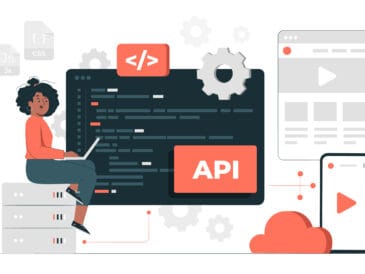Choosing the right JavaScript framework for front-end development can significantly impact the performance and success of your project. React and Angular are two of the most popular frameworks, each with its own set of advantages. This article provides an in-depth comparison to help you decide which one suits your needs best.
What is React?
React is an open-source JavaScript library developed by Facebook in 2013. It is designed for building user interfaces, particularly single-page applications where data needs to be dynamically updated without reloading the page. React uses a component-based architecture, making it easy to create reusable UI components.
Advantages of React JS
- Component-Based Architecture: React’s component-based structure allows developers to build encapsulated components that manage their own state, leading to more modular and maintainable code.
- Virtual DOM: React uses a virtual DOM to improve performance. When the state of an object changes, React updates the virtual DOM first, then efficiently updates the real DOM.
- Unidirectional Data Flow: React enforces a unidirectional data flow, making it easier to debug and understand applications.
- Large Community and Ecosystem: React has a vast community, extensive documentation, and numerous third-party libraries, making it easier to find resources and support.
- React Native: React’s ecosystem extends to mobile app development through React Native, allowing developers to build cross-platform mobile applications.
What is Angular?
Angular is a robust, open-source front-end framework developed by Google. Initially released in 2010 as AngularJS, it was completely rewritten in 2016 as Angular (or Angular 2+). Angular is a full-fledged framework providing a comprehensive solution for building dynamic single-page applications.
Benefits of Angular
- Two-Way Data Binding: Angular’s two-way data binding synchronizes the model and the view, ensuring that changes in the model reflect in the view and vice versa.
- Dependency Injection: Angular’s dependency injection simplifies the development process by making components more modular, reusable, and easier to test.
- Comprehensive Framework: Angular provides a complete solution for front-end development, including form validation, HTTP client, routing, and more, reducing the need for additional libraries.
- TypeScript: Angular is built with TypeScript, a statically typed superset of JavaScript, which helps in catching errors early and improving code quality.
- Strong Community and Enterprise Support: Backed by Google, Angular has a large community and extensive support, making it a reliable choice for enterprise-level applications.
An Overview: Difference Between Angular and React JS
1. Architecture:
- React: Library focused on building UI components. Requires additional libraries for state management (like Redux) and routing (like React Router).
- Angular: Full-fledged framework offering a complete solution out-of-the-box, including tools for routing, state management, and form validation.
2. Learning Curve:
- React: Easier to learn for beginners due to its simplicity and component-based architecture. However, integrating additional libraries might add complexity.
- Angular: Steeper learning curve due to its comprehensive nature and use of TypeScript, but offers a more structured development process.
3. Performance:
- React: Virtual DOM enhances performance by minimizing direct DOM manipulations.
- Angular: Real DOM can be slower for large applications, but Angular’s change detection mechanism helps optimize performance.
4. Data Binding:
- React: Unidirectional data binding, leading to more predictable data flow and easier debugging.
- Angular: Two-way data binding simplifies the synchronization between the model and the view.
5. Flexibility:
- React: Offers more flexibility by allowing developers to choose their own libraries and tools.
- Angular: Provides a more opinionated structure, reducing the need to make decisions about additional tools.
React JS vs Angular: When to Choose What?
1. Project Complexity and Size:
- React: Ideal for small to medium-sized projects where you need flexibility and a simple learning curve.
- Angular: Suited for large, enterprise-level applications requiring a comprehensive framework and robust structure.
2. Development Speed:
- React: Faster to set up and get started with, especially for projects where the main focus is on the UI.
- Angular: May take longer to set up due to its comprehensive nature, but provides a more consistent development process.
3. Team Expertise:
- React: Easier for teams with a background in JavaScript to pick up quickly.
- Angular: Better for teams with experience in TypeScript and who need a well-structured framework.
4. Scalability:
- React: Scalable, but managing state and other functionalities requires additional libraries.
- Angular: Highly scalable with built-in tools for managing complex applications.
5. Performance Requirements:
- React: Optimal for projects requiring high performance and fast rendering, thanks to the virtual DOM.
- Angular: Suitable for applications where robust functionality and features are prioritized over performance.
Angular or React – Which is Better?
There isn’t a one-size-fits-all answer to whether Angular or React is better. The choice depends on the specific needs and constraints of your project. Here are some scenarios to help guide your decision:
Choose React if:
- You need a lightweight library focused on building UI components.
- You prefer flexibility in choosing additional libraries and tools.
- You are building a single-page application with frequent updates to the UI.
- You need to develop cross-platform mobile applications using React Native.
Choose Angular if:
- You require a comprehensive framework with built-in solutions for routing, form validation, and state management.
- You prefer a structured development process with strong typing and early error detection via TypeScript.
- You are building a large-scale enterprise application with complex requirements.
- You need built-in two-way data binding for easier synchronization between model and view.
Conclusion
Both React and Angular offer unique strengths and are suitable for different types of projects. React provides a flexible, component-based approach ideal for building dynamic user interfaces, while Angular offers a full-fledged framework with a robust set of features for developing large-scale applications. Assess your project requirements, team expertise, and development goals to make an informed decision on which framework to choose.





